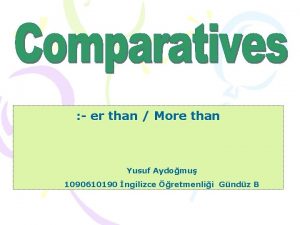Understanding Child Trauma Child trauma occurs more than



- Slides: 3

Understanding Child Trauma Child trauma occurs more than you think. More than TWO THIRDS OF CHILDREN reported at least 1 traumatic event by age 16. 1 Potentially traumatic events include: Each year, the number of youth requiring hospital treatment for physical assault-related injuries would fill EVERY SEAT IN 9 STADIUMS. 3 PSYCHOLOGICAL, PHYSICAL, OR SEXUAL ABUSE COMMUNITY OR SCHOOL VIOLENCE WITNESSING OR EXPERIENCING DOMESTIC VIOLENCE NATURAL DISASTERS OR TERRORISM COMMERCIAL SEXUAL EXPLOITATION SUDDEN OR VIOLENT LOSS OF A LOVED ONE REFUGEE OR WAR EXPERIENCES MILITARY FAMILY-RELATED STRESSORS (E. G. , DEPLOYMENT, PARENTAL LOSS OR INJURY) PHYSICAL OR SEXUAL ASSAULT NEGLECT 1 IN 4 HIGH SCHOOL STUDENTS was in at least 1 PHYSICAL FIGHT. 4 SERIOUS ACCIDENTS OR LIFE-THREATENING ILLNESS 1 in 5 high school students was bullied at The national average of child abuse and neglect victims in 2013 was 679, 000, or 9. 1 victims per 1, 000 children. 2 school; 1 IN 6 EXPERIENCED CYBERBULLYING. 5 19% of injured and 12% of physically ill youth have post-traumatic stress disorder. 6 More than half of U. S. families have been 1 , 000 affected by some type of disaster (54%). 7 Copeland, W. E. , Keeler G. , Angold, A. , & Costello, E. J. (2007). Traumatic Events and Posttraumatic Stress in Childhood. Archives of General Psychiatry. 64(5), 577 -584. 1 2 U. S. Department of Health and Human Services, Administration for Children and Families, Administration on Children, Youth and Families, Children’s Bureau. (2015). Child maltreatment 2013. http: //www. acf. hhs. gov/sites/default/files/cb/cm 2013. pdf 3, 4, 5 National Center for Injury Prevention and Control: Division of Violence Protection (2014). Taking Action to Prevent Youth Violence: A Companion Guide to Preventing Youth Violence: Opportunities for Action. http: //www. cdc. gov/violenceprevention/youthviolence/pdf/opportunities-for-action-companion-guide. pdf 6 Kahana, S. , Feeny, N. C. , Youngstrom, E. R. , & Drotar, D. (2006). Posttraumatic stress in youth experiencing illnesses and injuries: An exploratory meta-analysis. Traumatology, 12, 148 -161. doi: 10. 1177/1534765606294562 7 Save The Children (2014). 2014 National Report Card on Protecting Children in Disasters. http: //www. savethechildren. org/atf/cf/%7 B 9 def 2 ebe-10 ae-432 c-9 bd 0 -df 91 d 2 eba 74 a%7 D/SC-2014 DISASTERREPORT. PDF

Understanding Child Trauma It’s important to recognize the signs of traumatic stress and its short- and long-term impact. The signs of traumatic stress may be different in each child. Young children may react differently than older children. PRESCHOOL CHILDREN · · Fear being separated from their parent/caregiver Cry or scream a lot Eat poorly or lose weight Have nightmares ELEMENTARY SCHOOL CHILDREN · · Become anxious or fearful Feel guilt or shame Have a hard time concentrating Have difficulty sleeping “I’M A BAD “NO ONE UNDERSTANDS ME. ” KID. ” /4 FAULT. ” “IT’S ALL “IS SOMETHING WRONG WITH ME? ” MIDDLE AND HIGH SCHOOL CHILDREN · · Feel depressed or alone Develop eating disorders or self-harming behaviors Begin abusing alcohol or drugs Become involved in risky sexual behavior THE BODY’S ALARM SYSTEM Everyone has an alarm system in their body that is designed to keep them safe from harm. When activated, this tool prepares the body to fight or run away. The alarm can be activated at any perceived sign of trouble and leave kids feeling scared, angry, irritable, or even withdrawn. IMPACT OF TRAUMA The impact of child traumatic stress can last well beyond childhood. In fact, research has shown that child trauma survivors may experience: · Learning problems, including lower grades and more suspensions and expulsions · Increased use of health and mental health services HEALTHY STEPS KIDS CAN TAKE TO RESPOND TO THE ALARM: · Recognize what activates the alarm and how their body reacts · Decide whethere is real trouble and seek help from a trusted adult · Practice deep breathing and other relaxation methods · Increased involvement with the child welfare and juvenile justice systems · Long-term health problems (e. g. , diabetes and heart disease) TRAUMA is a risk factor for nearly all behavioral health and substance use disorders.

Understanding Child Trauma There is hope. Children can and do recover from traumatic events, and you play an important role in their recovery. Not all children experience child traumatic stress after experiencing a traumatic event. With support, many children are able to recover and thrive. “I AM STRONG. ” “I AM A GOOD KID WHO HAD A BAD THING HAPPEN. ” As a caring adult and/or family member, you play an important role. REMEMBER TO: “IT’S NOT MY FAULT. ” “PEOPLE CARE ABOUT ME. ” Assure the child that he or she is safe. Explain that he or she is not responsible. Children often blame themselves for events that are completely out of their control. Be patient. Some children will recover quickly while others recover more slowly. Reassure them that they do not need to feel guilty or bad about any feelings or thoughts. Seek the help of a trained professional. When needed, a mental health professional trained in evidence-based trauma treatment can help children and families cope and move toward A CRITICAL PART OF CHILDREN’S RECOVERY IS HAVING A SUPPORTIVE CAREGIVING SYSTEM, recovery. Ask your pediatrician, family physician, school counselor, or clergy member for a referral. access to effective treatments, and service systems that are trauma informed. Visit the following websites for more information: · http: //www. samhsa. gov/child-trauma GET HELP NOW https: //findtreatment. samhsa. govhttp: //nctsn. org/reso · http: //www. samhsa. gov/trauma-violence · http: //www. nctsn. org urces/get-help-nowhttp: //www. healthcaretoolbox. org SAMHSA’s mission is to reduce the impact of substance abuse and mental illness on America’s communities. SMA-15 -4923 Printed 2015





